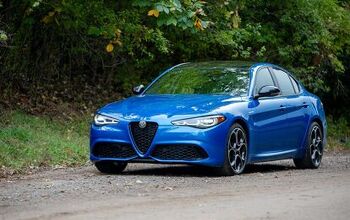Limited Access HOV Lanes Increase Accidents
Three years ago, Texas researchers discovered that the most common form of High Occupancy Vehicle (HOV) or carpool lane was associated with a significantly higher risk of injury accidents. A recent University of California study now suggests a remedy intended to reduce HOV lane risk may actually be making the already dangerous lanes even less safe. Researchers with California Partners for Advanced Transit and Highways (PATH), a joint venture of the state Department of Transportation and the University of California, looked at accident data for two types of carpool lanes in California. They considered 279 miles of “continuous” HOV lanes, primarily in the northern part of the state, where drivers can enter or exit the HOV facility at any point. The report then analyzed another 545 miles of “limited access” lanes that used either painted stripes or flexible plastic barriers to restrict cars from entering or exiting except at pre-determined locations. Although the limited-access lanes promised smoother travel with fewer interruptions from general purpose traffic, they also delivered deadlier travel. “Rear end and sideswipe collisions together comprised over 90 percent of all collisions in both facilities,” the report stated. “Higher Property Damage Only collision rates were observed in both the HOV and left lanes of the HOV facility with limited access. The combined injury related collision rates for the HOV and left lane was higher for the limited access.”
The California study avoided comparing the HOV lane accident rate with general purpose lane accident rates, as HOV remains popular with the public agencies that fund research. In 2005, however, the Texas Transportation Institute found that during peak traffic times, traffic in HOV lanes could at times move up to 35 MPH faster than regular lanes, which is consistent with the fundamental theory behind HOV. When slower cars tried to merge into the faster HOV lane, they were often rear-ended by traffic unable to slow down in time. Likewise, the faster HOV traffic trying merge into slower, regular traffic caused the left-lane injury accident rate to soar at least 150 percent, according to the Texas findings.
The California study attempted to isolate likely causes for the higher accident rates. Because HOV facilities take up a significant amount of additional road space compared to general purpose lanes, the amount of shoulder space is often reduced. This created a source of conflict.
“Collision rates diminish with an increase in shoulder width, regardless of the type of access associated with the HOV lane,” the California study found.
In addition, the highest accident rates were found to be within 0.3 miles of an on-ramp or off-ramp for the limited access lanes. This suggests that concentrating the merge areas compounded the risk of accident caused by the radical speed differential between HOV and general purpose traffic. The Texas study found that only HOV lanes separated by permanent concrete barriers had a lower overall risk of accidents.
“The findings from this research show that the HOV facility with limited access offers no safety advantages over the one with a continuous access,” the California study concluded. “The combined collision rates of the HOV and its adjacent lane were higher for the HOV facility with limited access.”
More by The Newspaper
Latest Car Reviews
Read moreLatest Product Reviews
Read moreRecent Comments
- Varezhka Maybe the volume was not big enough to really matter anyways, but losing a “passenger car” for a mostly “light truck” line-up should help Subaru with their CAFE numbers too.
- Varezhka For this category my car of choice would be the CX-50. But between the two cars listed I’d select the RAV4 over CR-V. I’ve always preferred NA over small turbos and for hybrids THS’ longer history shows in its refinement.
- AZFelix I would suggest a variation on the 'fcuk, marry, kill' game using 'track, buy, lease' with three similar automotive selections.
- Formula m For the gas versions I like the Honda CRV. Haven’t driven the hybrids yet.
- SCE to AUX All that lift makes for an easy rollover of your $70k truck.


































Comments
Join the conversation
«The big problem is that many states divert these revenues to other sources.» Not only states: in point of fact, the Federal Government diverts almost 40% of your 18¢/gal federal gasoline taxes to stuff unrelated to highways, such as rail, subways, etc. They call it "flexing" (21%) and "Mass Transit Account" (16%). Source of the two slides below: the Federal Transit Administration
Yes, and the total of all those 'diversions' pales in comparison to the amount of gas taxes collected on roads which never see a dime of gas-tax-funding, and the amount of local, county, and state property and sales and income taxes spent on roadways. Not even in the same ballpark.